Our last day in China was spent seeing the few places around Tiananmen Square that were left on our list: Temple of Heaven, Mao’s Mausoleum, a hutong or two, and Dashilar.
The Temple of Heaven is really a large park, on that costs about 10 yuan to get into per person. In the summer I’m sure it’s really lovely, but it was mostly brown with bare branches as we strolled through.
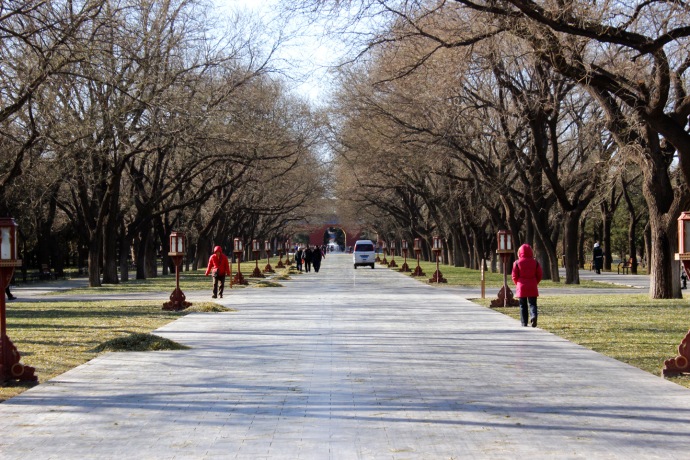
Constructed between 1406 and 1420 by Emperor Yongle, the religious complex wasn’t actually named Temple of Heaven until around 200 years later.
Inside the park are three main features, which we made a beeline for: the Hall of Prayer for Good Harvests, the Echo Hall, and the Circular Mound Altar.
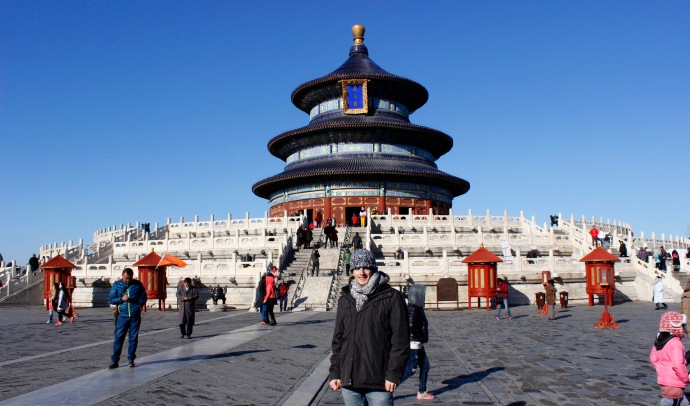
The Good Harvest temple was where the emperor would go to pray for harvest and bounty for the Chinese people. The temple is made completely from wood without a single nail.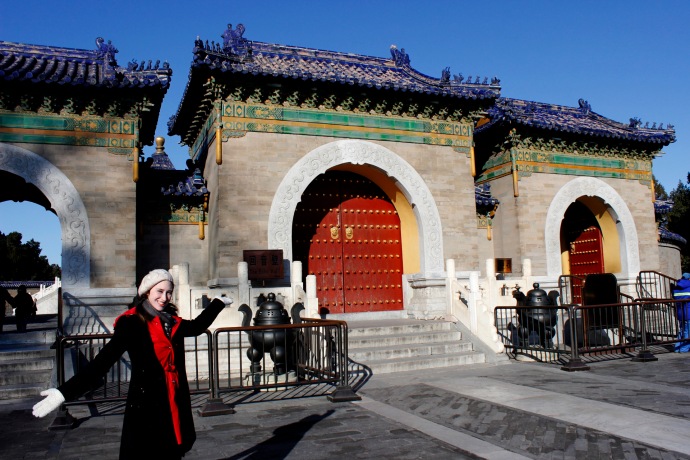
In ancient China the emperor was considered to be the Son of Heaven, and twice a year a grand procession from the Forbidden City to the Temple of Heaven would be undertaken, the officials all wearing fancy clothing. 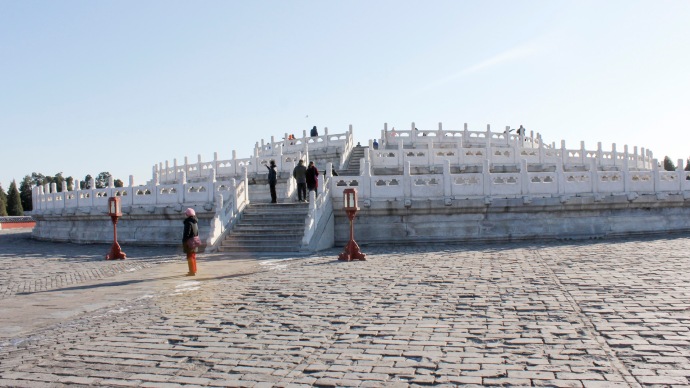
Here on the Earthly mount was the high point of the winter solstice service, where the Emperor would sacrifice to the gods and sun and moon. Everything had to go perfectly, down to the most minute detail, or it would be a bad omen for the coming year.
It’s about 20 minutes walking back to Tiananmen, and we walked past several hutongs. Hutongs are tiny little alley-way neighborhoods, with houses built so close together that sometimes you have to curve and duck around the roof’s eaves. Beijing used to be full of these historic neighborhoods, but in the name of progress and modernization they are being torn down, the roads widened, and shops put in its place. Much of the Dashilar and Qianmen hutongs were knocked down right before the Beijing 2008 Olympic games and rebuilt to look historic and fancy. Now shops line the wide spaces of Dashilar, and Qianmen isn’t that far behind.
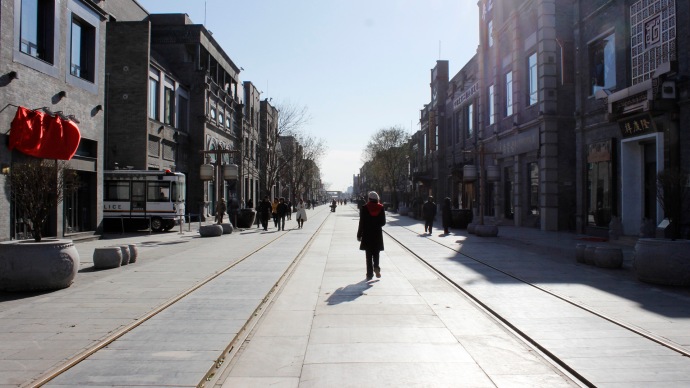 Mao Zedong’s Mausoleum was built in 1976 at his death. Mao is till a much-revered figure in China, and thousands still flock to see his mummified remains. Although our guidebook said we had to have our passports ready, no one checked any identification. We did have to check our bags across the street and enter the building without hats, but that was all.
Mao Zedong’s Mausoleum was built in 1976 at his death. Mao is till a much-revered figure in China, and thousands still flock to see his mummified remains. Although our guidebook said we had to have our passports ready, no one checked any identification. We did have to check our bags across the street and enter the building without hats, but that was all.
Inside the entry foyer Chinese guards stood at attention, a massive oil painting of Communist China as the backdrop. Many Chinese had purchased flowers before entering and laid them on the small shrine in the foyer. We followed the ropes and stanchions around the corner to the hall where Mao lay, illuminated by low lights and lying on a bed of velvet. Of course, no photos are allowed, so we don’t have any to show.
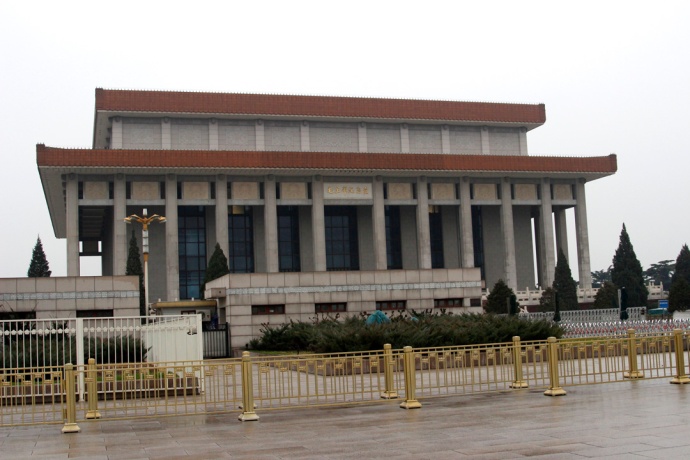
Although in the West Mao’s reputation is wholly bad, in China it’s a little more complicated. His Great Leap Forward was disastrous for the economy (and therefore harmed millions of people), but he did unify China and give them a hope of a better future. Media is strictly controlled by the government, so many of the less educated, poorer people don’t know about the bad things Mao did. Mao’s successor, Deng Xiaoping, was fairly honest when he said to look at Mao’s contributions as 70% good and 30% bad.
At this point, the sun was setting and we needed to head back to the hostel to gather our bags. On our way we noticed (again) all the people bundled up on their scooters with a full quilted blanket covering their legs. As the weather got colder in Korea, we shivered every time we rode on the scooter. That wind chill really drops the temperature and freezes our legs. Although Jordan had huge gloves to cover his hands, it still left his chest and spread legs in the way of the wind. So we laughed and exclaimed how smart those massive, thick blankets were, how we wished we’d seen them in Korea. Jordan even took a photo and sent it to our former coworker who bought our scooter.

Our flight left Beijing international airport at 8:30 pm and we were on our way to Mongolia. We spent a total of 68 hours in Beijing on our 72-hour visa.
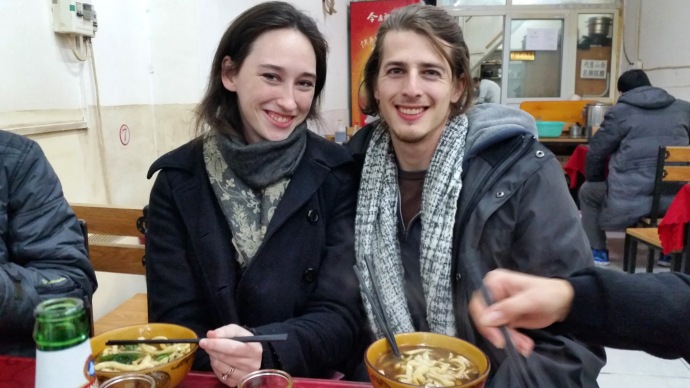
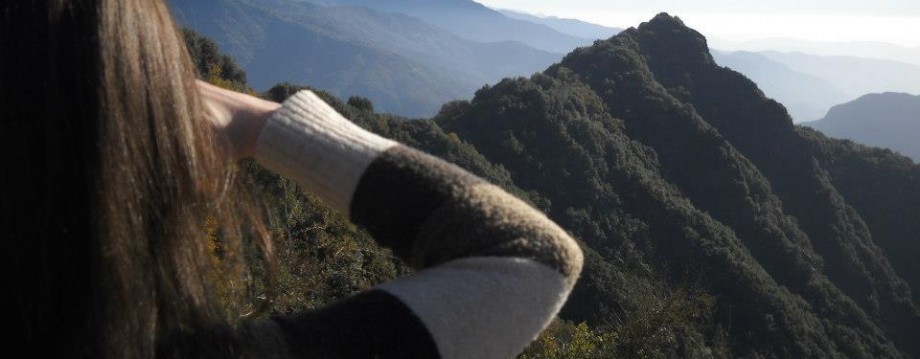
Recent Comments